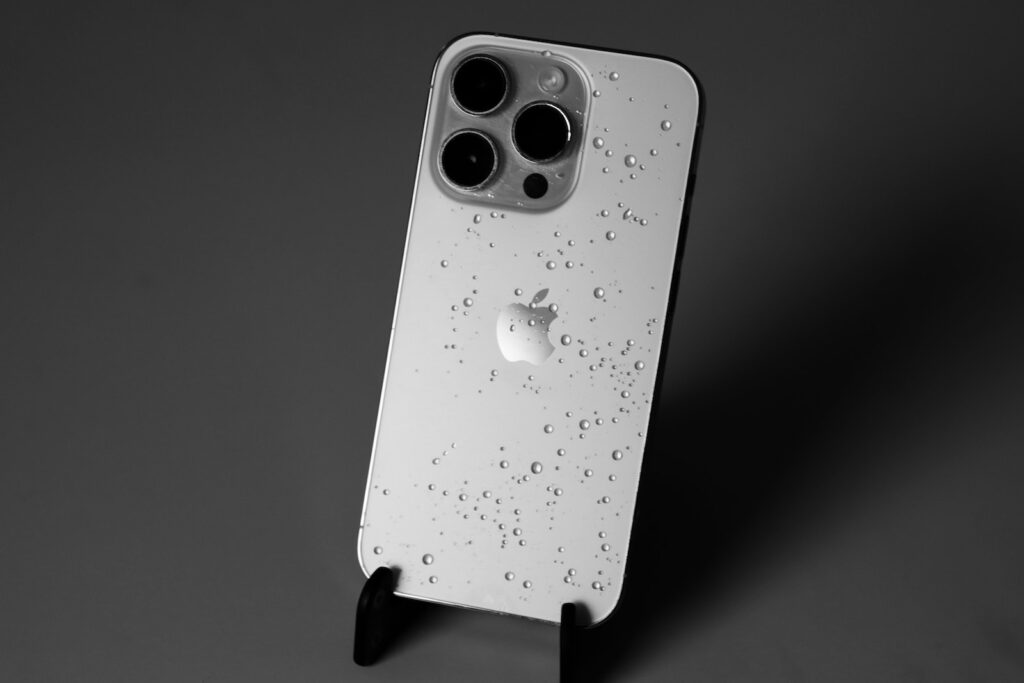
Photo by Efrem Efre
Apple iPhone Ultra spatial camera, a rumored feature that could let you capture photos and videos in 3D. Find out how it works and why you should care.
Table of Contents
Apple, renowned for its groundbreaking innovations in the smartphone realm, is currently generating buzz with its rumored iPhone Ultra spatial camera. This incredible camera is created to capture 3D photos and videos, giving them a depth and realism that regular cameras can only imagine. Now, let’s get into the nitty-gritty: What precisely is a spatial camera, how does it operate, and why should you be excited about it? We’ll dive deep into these questions in this article.
A spatial camera is a device that excels at capturing images and videos by conveying a profound sense of depth and a three-dimensional spatial feel. Typically, this is achieved by taking multiple shots or videos from marginally different angles or utilizing specialized sensors to create a stereoscopic effect. This effect enables viewers to discern the distance and positioning of objects within the scene, along with their shapes and sizes.
Spatial cameras are frequently employed in virtual and augmented reality applications, as well as in 3D modeling and scanning. They have the power to create immersive and lifelike experiences, enriching the user’s engagement and enjoyment. For instance, with a spatial camera, you can relive cherished memories as if you’re transported back in time or explore new locales and environments without ever leaving your home.
According to an intriguing rumor circulating, a Weibo account known for its accurate insights into Apple’s plans suggests that a future iPhone Ultra model might possess the ability to capture spatial photos and videos specifically tailored for viewing on Apple’s Vision Pro headset. The Vision Pro headset marks Apple’s maiden voyage into the realm of virtual reality, boasting a three-dimensional camera designed for capturing spatial photos and videos.
This rumor hints that the iPhone Ultra’s camera configuration could potentially redefine the expectations for mobile phone photography and videography. It also hints at the inclusion of an additional sensor on the device’s rear, distinct from the main wide camera, telephoto camera, ultra-wide camera, LiDAR scanner, and Adaptive True Tone flash. This additional sensor would be strategically positioned to create the stereoscopic effect crucial for capturing spatial photographs.
While the rumor doesn’t delve into the precise mechanisms behind the iPhone Ultra’s spatial photo and video capabilities, it’s plausible that it could employ a technique similar to the Vision Pro headset. The Vision Pro headset relies on outward-facing cameras to record immersive 3D content with exceptional depth, complemented by advanced algorithms that seamlessly stitch together multiple images into a single spatial photo or video. These captivating creations can then be enjoyed on the headset’s display or shared with others.
The iPhone Ultra spatial camera has the potential to revolutionize smartphone photography and videography, offering several advantages over traditional cameras:
However, it’s important to acknowledge that these benefits come with certain challenges and limitations. For instance, you may require more storage space on your device or cloud service to accommodate the larger file sizes associated with spatial photos and videos. Furthermore, proper viewing may necessitate a compatible device or headset, such as the Apple Vision Pro or other virtual reality equipment. Additionally, the release of this feature remains uncertain, as it is currently based on a single unverified rumor that has yet to receive confirmation from Apple.
The iPhone Ultra spatial camera stands as an enticing rumor that has yet to be substantiated by Apple. Nevertheless, it could potentially usher in a groundbreaking era, allowing users to capture photos and videos in three dimensions, thereby delivering a depth and realism unparalleled by conventional cameras. The concept revolves around incorporating an additional sensor on the device’s rear, working in tandem with other cameras to create a stereoscopic effect. Furthermore, it is tailored for seamless viewing on Apple’s Vision Pro headset, boasting its own three-dimensional camera for spatial content capture.
The iPhone Ultra spatial camera carries the promise of numerous benefits for smartphone photography and videography, including heightened realism, expanded creative possibilities, and intensified user engagement. Nevertheless, it also presents challenges, such as increased storage demands, compatibility prerequisites, and an uncertain release timeline. While it remains a rumor, if it indeed materializes, it could usher in a revolution that transforms the way we capture and relish our photos and videos.